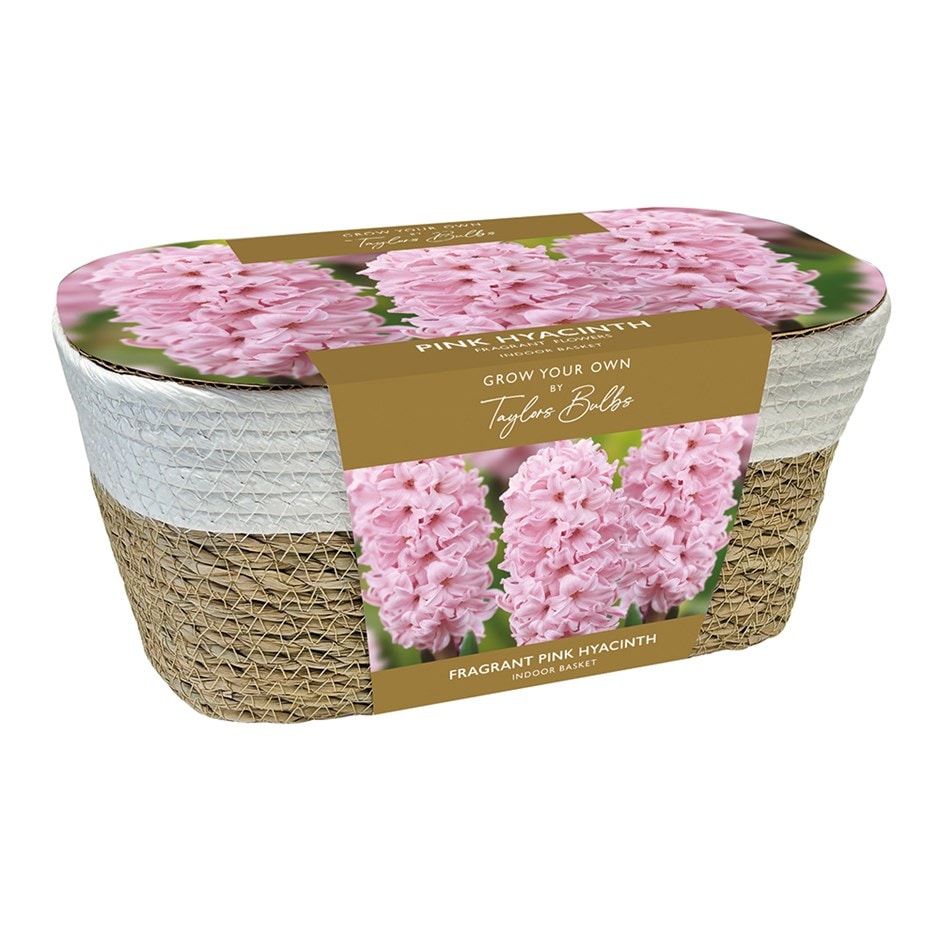Indoor pink hyacinths and wicker basket gift set
gift set
- gift set
- £17.99
- available to order from autumn 2024
Delivery options
- Bulbs (only) £4.95
- Position: full sun or partial shade
- Soil: any well-drained, moderately fertile soil (for container-grown bulbs use two parts John Innes No.2 compost to one part sharp grit)
- Rate of growth: average
- Flowering period: April to May
- Hardiness: fully hardy
- Dimensions: 30cm x 19cm x 14.5cm
This gift set includes a lined wicker basket, compost, 6 hyacinth 'Fondant' bulbs and growing instructions to create a beautiful display.
These 'prepared' hyacinths have been through a sequence of cold treatments, which triggers the growing process. This means they tend to flower much earlier than 'unprepared' hyacinths, and they are mainly grown as indoor plants, where their strongly scented flowers will fill your room with their sweet perfume. Fondant has a flowerspike which is crowded with flaring, bell-shaped flowers that have a deliciously sweet scent. The petals are a soft shade of apple blossom pink, becoming paler towards the outer edge. - Growing instructions: Using gloves plant bulbs close together (but not touching), into the basket containing bulb fibre, so their tops are just above the surface of the compost. After potting up, they will need a cool, dark period, which will encourage root growth, so pop them into a black bin liner and leave in the shed or garage. Check them occasionally to make sure the compost does not get too dry, and water them when necessary. When the growing shoot is about 5cm tall, take it out of the bag and bring the pot inside to a cool room away from direct sunlight until the leaves turn green. Afterwards they can be moved closer to the window, but if possible keep them away from central heating radiators. After they have finished flowering they can be planted outside in the garden, where they will flower again (in March or April) the following year.
- Harmful if eaten/skin irritant
